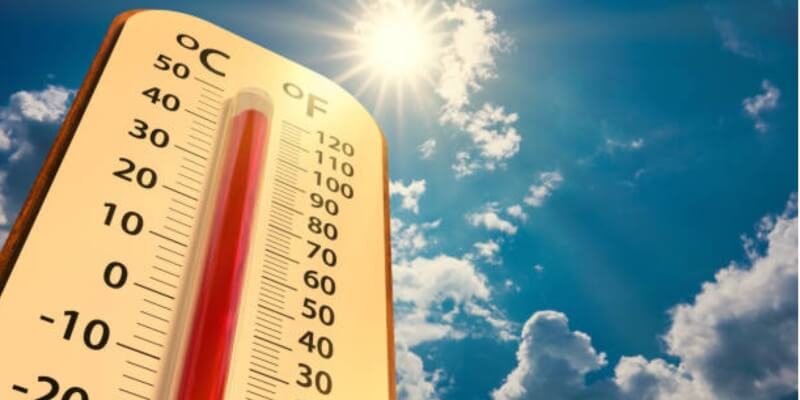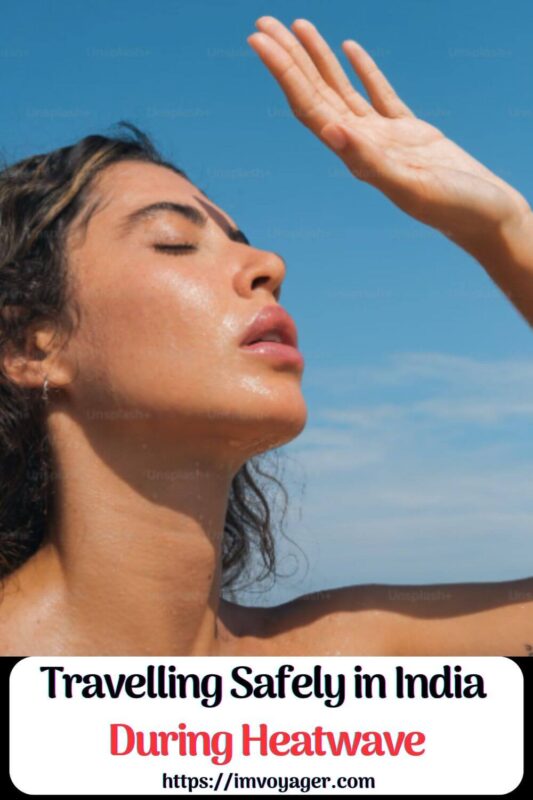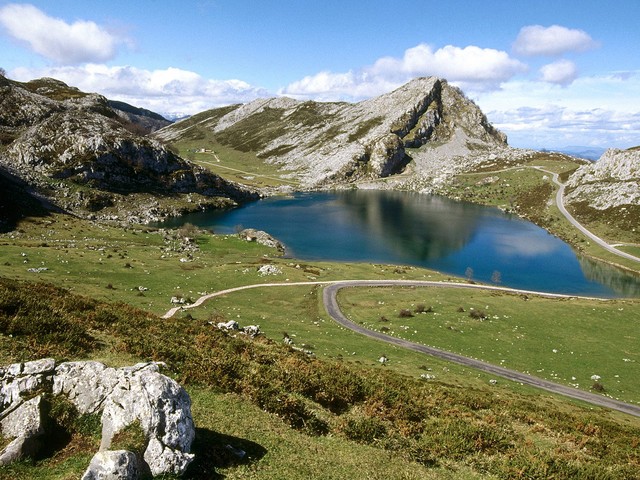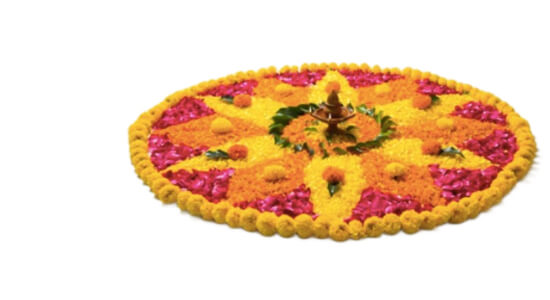Travelling during summer in India can be quite challenging due to the extreme heat and humidity. It is crucial to take necessary precautions to ensure a safe and enjoyable trip. This blog post delves into travelling safely in India during heatwave and serves as a comprehensive guide for those planning to explore India during the hottest months of the year. Read on to learn how you can prevent sunstroke during summer travel and make the most of your Indian adventure.
Table of Contents
What Is a Heat Wave | What Is a Sunstroke | What Is a Heat Stroke?
A heat wave is a prolonged period of excessively hot weather, which may be accompanied by high humidity. These conditions can be dangerous and lead to various health issues. A heat wave often sees temperatures soaring above the average for a particular region and can last for several days or even weeks.
Sunstroke, also known as heat stroke, occurs when the body’s temperature regulation fails due to prolonged exposure to high temperatures or physical exertion in hot weather. This condition is severe and can be life-threatening if not treated promptly. Sunstroke results from the body’s inability to cool down effectively, leading to an overheated core temperature.
Heat stroke is a medical emergency characterized by a body temperature above 104°F (40°C). It is accompanied by symptoms such as confusion, seizures, and loss of consciousness. Without immediate medical attention, heat stroke can cause damage to vital organs and be fatal. It is the most severe form of heat-related illness, often resulting from prolonged exposure to high temperatures or strenuous activity in hot weather.
Heat Wave Facts
Travelling during a heat wave? Let’s dive into the facts about heat waves.
-
Heat Waves Are Increasing
The frequency and intensity of heat waves are on the rise globally due to climate change. This makes it more important than ever to be prepared and take necessary precautions.
-
India’s Heatwaves
In India, heat waves typically occur from March to June, with May being the hottest month. Northern and central India are most affected, with temperatures often exceeding 45°C (113°F).
-
Health Risks
Heat waves pose significant health risks, especially for vulnerable populations such as the elderly, children, and those with preexisting health conditions. Heat-related illnesses can range from mild heat cramps to severe heat stroke.
-
Economic Impact
Heat waves also have economic implications, affecting agriculture, labour productivity, and energy consumption. The increased use of air conditioning during heat waves can strain power grids.
-
Preventive Measures
Staying hydrated, wearing light clothing, avoiding peak sun hours, and taking frequent breaks in shaded or air-conditioned areas are crucial preventive measures.
-
Urban Heat Islands
Cities often experience higher temperatures than rural areas due to the urban heat island effect. Concrete and asphalt absorb heat, making urban areas significantly hotter.
-
Warning Systems
Many regions have implemented heat wave warning systems to alert the public about upcoming heat waves and provide guidelines on how to stay safe.
-
Hydration is Key
During heat waves, it is essential to drink plenty of water and avoid drinks with caffeine or alcohol, as they can contribute to dehydration.
-
Public Awareness
Education and public awareness campaigns are vital to inform people about the dangers of heat waves and the steps they can take to protect themselves.
Travelling During A Heat Wave | Heatwave Travel
Summer vacations often mean road trips with family, holidays with friends, or exploring new destinations. However, travelling in India during a heatwave can be particularly challenging. The searing temperatures and high humidity levels can make even short journeys uncomfortable and potentially dangerous.
India experiences extreme heat in many regions during the summer months. States such as Rajasthan, Gujarat, Maharashtra, Uttar Pradesh, Madhya Pradesh, and Telangana often record temperatures above 40°C (104°F). Popular tourist destinations like Delhi, Jaipur, Agra, Varanasi, Hyderabad, and Ahmedabad can be particularly hot from April to June. The coastal regions, while slightly cooler, still face high humidity, making the heat feel more intense.
Travelling during a heat wave requires careful planning and preparation. Tourists need to stay hydrated, wear appropriate clothing, and avoid direct sunlight during peak hours. Sightseeing early in the morning or late in the evening can help avoid the worst of the heat. Staying in air-conditioned accommodations and using air-conditioned transportation can also make travel more bearable.
Here are some temperature ranges in popular tourist places during peak summer months:
- Delhi: 35°C to 45°C (April to June)
- Jaipur: 38°C to 48°C (April to June)
- Agra: 40°C to 45°C (April to June)
- Varanasi: 35°C to 45°C (April to June)
- Hyderabad: 35°C to 43°C (April to June)
- Ahmedabad: 40°C to 46°C (April to June)
- Mumbai: 30°C to 35°C (April to June) with high humidity
- Goa: 30°C to 35°C (April to June) with high humidity
Despite these challenges, India’s rich cultural heritage, historical sites, and vibrant cities make it a worthwhile destination. With the right precautions, it is possible to avoid heat stroke on holiday and have a memorable and safe summer vacation.
Symptoms Of Heat Stroke On Holiday And What to Do
Heat stroke is a severe condition that can occur during holidays, especially when travelling in hot climates. Recognizing the symptoms early and taking immediate action is crucial.
Heat Stroke On Holiday – Symptoms To Look Out For
- High body temperature (104°F or higher)
- Altered mental state or behaviour (confusion, agitation, slurred speech)
- Hot, dry skin or profuse sweating
- Nausea and vomiting
- Flushed skin
- Rapid heartbeat
- Rapid breathing
- Headache
- Fainting
Heat Stroke On Holiday – Symptoms To Look Out For In Kids
- High fever without sweating
- Extreme thirst
- Red, hot, and dry skin
- Nausea and vomiting
- Dizziness or fainting
- Rapid breathing
- Weakness or lethargy
- Irritability or confusion
Heat Stroke On Holiday – Symptoms To Look Out For In The Elderly
- Throbbing headache
- Dizziness and light-headedness
- Lack of sweating despite the heat
- Dry, hot, and red skin
- Muscle weakness or cramps
- Rapid heartbeat
- Rapid, shallow breathing
- Behavioral changes such as confusion or disorientation
Acting Swiftly: Steps To Take When Heat Stroke Symptoms Arise
If you or someone else shows symptoms of heat stroke:
- Move to a cooler location, preferably indoors with air conditioning.
- Remove any unnecessary clothing.
- Cool the body with whatever means available, such as a cool bath, sponge bath, or wet cloth.
- Hydrate with water or sports drinks.
- Seek immediate medical attention if symptoms are severe.
Importance Of Travelling Safely In India During Heatwave
Travelling safely in India during a heatwave is essential to prevent heat-related illnesses and ensure a pleasant trip. The extreme temperatures can be hazardous, making it vital to take appropriate measures to protect yourself and your travel companions. Awareness and preparation can significantly reduce the risk of heat stroke on holiday, dehydration, and other heat-related issues.
52 Tips To Prevent Sunstroke During Summer Travel | Travelling Safely In India During Heatwave
Preventing sunstroke during summer travel involves taking proactive measures to stay cool and hydrated. Here are 52 tips to prevent heat stroke during summer travelling to help you travel safely:
-
- Stay Hydrated: Drink plenty of water throughout the day to prevent dehydration.
- Wear Light Clothing: Prevent sunstroke during summer travel by opting for light-coloured, loose-fitting clothes to help your body stay cool.
- Use Sunscreen: One of the ways to beat the heat is by applying sunscreen with a high SPF to protect your skin from UV rays.
- Wear a Hat: A wide-brimmed hat can provide shade and protect your face from the sun, one of the essential precautions to be taken while traveling during a heatwave.
- Use Sunglasses: Protect your eyes from UV rays with sunglasses, one of the key heatwave travel tips.
- Cooling Strategies: Use portable fans, cooling towels, and other strategies to beat the heat and stay comfortable during your summer adventures.
- Avoid Peak Sun Hours: Plan activities in the early morning or late evening to avoid the hottest part of the day, helping to prevent heat stroke while traveling.
- Take Breaks: Rest in shaded or air-conditioned areas to cool down and avoid heat stroke on your summer vacation.
- Eat Light Meals: Heavy meals can increase body temperature, so eat light, refreshing foods.
- Carry a Water Bottle: Always have a water bottle handy to stay hydrated.
- Use a Cooling Towel: A damp cooling towel around your neck can help reduce body temperature.
- Stay Indoors During Heatwaves: Limit outdoor activities during extreme heat.
- Check Weather Forecasts: Be aware of the weather conditions and plan accordingly.
- Wear Moisture-Wicking Fabrics: These fabrics help keep sweat away from your body.
- Use Fans or Air Conditioning: Ensure your accommodation has good ventilation.
- Take Cool Showers: A cool shower can help lower your body temperature.
- Avoid Caffeine and Alcohol: These can dehydrate you quickly.
- Use Umbrellas for Shade: Portable umbrellas can provide additional shade.
- Apply Aloe Vera Gel: If you get sunburned, aloe vera can soothe your skin.
- Avoid Strenuous Activities: Reduce physical exertion during peak heat.
- Use a Sunshade: In cars, use sunshades to keep the interior cool.
- Travel Early or Late: Schedule travel during cooler parts of the day.
- Stay in Air-Conditioned Hotels: Choose accommodations with air conditioning.
- Wear Breathable Shoes: Closed shoes can trap heat; opt for breathable footwear.
- Stay in the Shade: Look for shaded areas when outdoors.
- Carry Electrolyte Drinks: These help replenish lost salts and minerals.
- Use Ice Packs: Carry ice packs to cool down quickly.
- Monitor Health: Pay attention to signs of heat exhaustion or heat stroke.
- Dress in Layers: Light layers can be adjusted according to the temperature.
- Rest Frequently: Take frequent breaks when exploring or engaging in physical activities.
- Hydrate with Fruits: Eat fruits with high water content like watermelon and cucumbers.
- Avoid Direct Sunlight: Seek shade whenever possible.
- Use a Cooling Mist: Carry a spray bottle with water to mist your face.
- Travel with a First Aid Kit: Include items to treat heat-related illnesses.
- Stay Informed: Follow local news and heat advisories.
- Choose Air-Conditioned Transport: Use air-conditioned buses, trains, or taxis.
- Wear UV-Protective Clothing: Special clothing can block harmful UV rays.
- Plan Your Day: Arrange outdoor activities during cooler times.
- Know the Signs of Heat-Related Illness: Educate yourself on symptoms and treatments.
- Use Technology: Apps can provide real-time weather updates and health advice.
- Avoid Overcrowded Places: Crowded areas can be hotter and more stressful.
- Protect Children: Ensure kids stay hydrated and wear appropriate clothing.
- Stay Connected: Keep in touch with someone about your travel plans and health.
- Carry Snacks: Have light, hydrating snacks like yoghurt and salads.
- Practice Good Hygiene: Sweat can cause skin issues, so maintain cleanliness.
- Use Portable Fans: Battery-operated fans can provide relief in hot conditions.
- Stay Calm and Relaxed: Stress can increase your body temperature.
- Protect Your Pets: If travelling with pets, ensure they stay cool and hydrated.
- Avoid Outdoor Sports: Limit activities like running or cycling during peak heat.
- Choose Cool Destinations: Consider destinations with milder climates.
- Follow Local Advice: Listen to local authorities and follow their recommendations.
- Check Travel Advisories: Before embarking on your journey, always look out for travel advisories for the destination you are visiting. These advisories can provide critical information on heatwave conditions, safety measures, and any health warnings, ensuring you are well-prepared for your trip.
Packing Checklist For Travelling During A Heat Wave
When travelling during a heatwave, packing the right items is essential for a comfortable and safe trip. Here is a checklist to ensure you’re well-prepared to prevent heat stroke on holiday:
- Water Bottles: Carry multiple bottles to stay hydrated throughout the day.
- Sunscreen: Choose a high SPF to protect your skin from sunburn.
- Hat: A wide-brimmed hat for shade and protection.
- Sunglasses: UV-protective sunglasses to shield your eyes.
- Cooling Towel: A towel that can be soaked in water to provide cooling relief.
- Lightweight Clothing: Breathable, moisture-wicking fabrics to stay cool.
- Portable Fan: A small, battery-operated fan for instant cooling.
- Electrolyte Drinks: Pack powdered electrolyte drinks to replenish lost minerals.
- First Aid Kit: Include items specifically for heat-related issues.
- Moisturizer: Hydrating lotion to prevent dry skin.
- Aloe Vera Gel: For soothing sunburned skin.
- Umbrella: For portable shade during outdoor activities.
- Snacks: Light, hydrating snacks like fruits and yoghurt.
- Insect Repellent: To avoid bites and irritation.
- Light Blanket: For unexpected cooler evenings.
- Hydrating Face Mist: To refresh and cool down your face.
- Sun-Protective Clothing: UV-blocking shirts and pants.
- Comfortable Shoes: Breathable and light shoes for walking.
- Travel-sized Toiletries: Including items like deodorant to stay fresh.
- Portable Charger: To keep your devices charged for emergency use.
Survival Tips To Travelling Safely In India During Heatwave – FAQ
Travelling safely in India during a heatwave requires preparation and knowledge. Here are some frequently asked questions (FAQs) about travelling during a heat wave with brief answers to help you navigate the heat and prevent sunstroke during summer travel.
What should I wear during a heatwave?
Wear lightweight, loose-fitting, and light-coloured clothing.
How much water should I drink?
Aim to drink at least 2-3 litres of water daily, more if active.
What are the best times to go outside?
Early morning and late evening when temperatures are cooler.
How can I protect my skin from the sun?
Use sunscreen with SPF 30 or higher, wear a hat, and stay in the shade.
What foods help stay cool?
Eat hydrating fruits and vegetables like watermelon and cucumber.
Can I exercise during a heatwave?
Limit strenuous activities; if necessary, do them early in the morning or indoors.
What should I do if I feel overheated?
Move to a cooler place, hydrate, and use cooling methods like a cold shower.
Are there any apps to help with heatwave travel?
Weather apps and health apps can provide real-time advice and updates.
How can I keep my kids safe?
Ensure they stay hydrated, wear appropriate clothing, and take frequent breaks.
What should I do in case of a heat stroke?
Seek immediate medical help, move to a cooler area, and use cooling measures.
From staying hydrated and wearing appropriate clothing to planning activities during cooler parts of the day, this guide has covered everything you need to know to stay safe and comfortable while exploring India’s diverse landscapes and rich cultural heritage. Whether you’re visiting bustling cities or serene countryside, these practical tips will help you navigate the heat and have a memorable trip.
We hope you liked our blog post about travelling safely in India during heatwave. If you found this post on travelling during a heat wave useful, please share this guide to travelling safely in India during heatwave season on your social media platform and with your friends. Have you travelled during a heat wave? If yes, please share your experience and how you coped with the heat wave.
Embark on a journey of exploration and inspiration. Subscribe to our blog and newsletter to receive the latest travel tips and captivating stories that fuel your wanderlust. Our YouTube channel – Travel With Sandy & Vyjay offers a delightful glimpse into India’s rich cultural heritage and stunning landscapes, covering destinations, places to stay, culture, food, and more. Subscribe and watch our travel videos to ignite your travel dreams.
Connect with us on our vibrant social media platforms — Facebook, Instagram, X (formerly Twitter), LinkedIn, and YouTube — where you can share your thoughts, interact, and join lively conversations. Become a part of our energetic WhatsApp community to meet fellow travellers who share your passion for culture and adventure. Dive into our blog for endless suggestions, wanderlust, and inspiration to travel more. Together, let’s embrace the thrill of discovery and create meaningful connections!
We are a reader-supported site. This means, at no additional cost to you, we may earn a small commission if you book a flight or hotel, or make a purchase through one of our affiliate links. Thank you for your support!
Flights – Air India (Domestic) or Air India (International), or Priceline
Tours – Click to book top tours around the world. Book tours and activities here.
Experiences – Book your next unforgettable experience here, with flexible bookings and free cancellations. Reserve tours and activities now and pay later.
Hotels – Click to book the best hotels/resorts. Choose the best stay options with TripAdvisor or Hotels.com, or HotelsCombined
Travel Insurance – Click to book Travel Insurance that covers a range of travel insurance and safety services including medical emergencies, lost luggage, trip cancellation and more
Visas and Travel Documents Application – Click here for Online Travel Visa Check
Online Passport Photo – Get Your Passport Photo Online here
Do You Love Traveling?
Do you want to know how to travel the world? We have put together a very useful travel resources page with the best travel tips. Go check it out now. Thanks for visiting our site Voyager - imvoyager.com and taking the time to read this post! If you wish to collaborate/work with us then reach us at [email protected] We’d love it if you’d comment by sharing your thoughts on this post and share this post on social media and with your friends. Follow our journey on our social media channels: Facebook X Instagram Pinterest YouTube
Start dreaming about your next adventure with Tripadvisor. Book your next unforgettable experience here with flexible bookings and free cancellations.
Flight booking online at the best fare
60+ Million Users Trust TripAdvisor With Their Travel Plans. Shouldn't You?

Sandy & Vyjay are a husband and wife duo who are travel content creators. They are co-founders of this travel website and are one of the leading travel content creators in India.
Sandy & Vyjay quit their successful corporate careers to pursue their passion for travel and writing full-time. Their dedication has earned them the “Best Travel Writer” award and numerous accolades on both national and international stages. Focusing on India’s destinations, heritage, and culture, they are passionate advocates for nature and the environment. Through their content, they promote ecotourism and sustainable travel, inspiring others to explore and preserve the beauty of India.










Thanks for sharing this useful post. Going to save this post, as in my city summer vacation starts from July.
A comprehensive guide to safe summer travel in India, offering practical tips to beat the heat. Great for planning a trip during the hot months. Highly recommend for a worry-free adventure!
A very important post especially when we are planning an outing. Great comprehensive guide on preventing sunstroke during summer travel. These tips are invaluable for staying safe and cool while enjoying your adventures.
This post is a must-read while organizing a trip. This comprehensive tutorial explains how to avoid sunstroke when traveling in the summer. To stay cool and safe in your activities, pay close attention to the advice given.
I just read your blog post on traveling safely in India during a heatwave, and I have to say, it’s fantastic! Your 52 tips are incredibly thorough and practical. I especially appreciated the advice on staying hydrated and applying sunscreen. Thanks for sharing such valuable information. Looking forward to your next post!